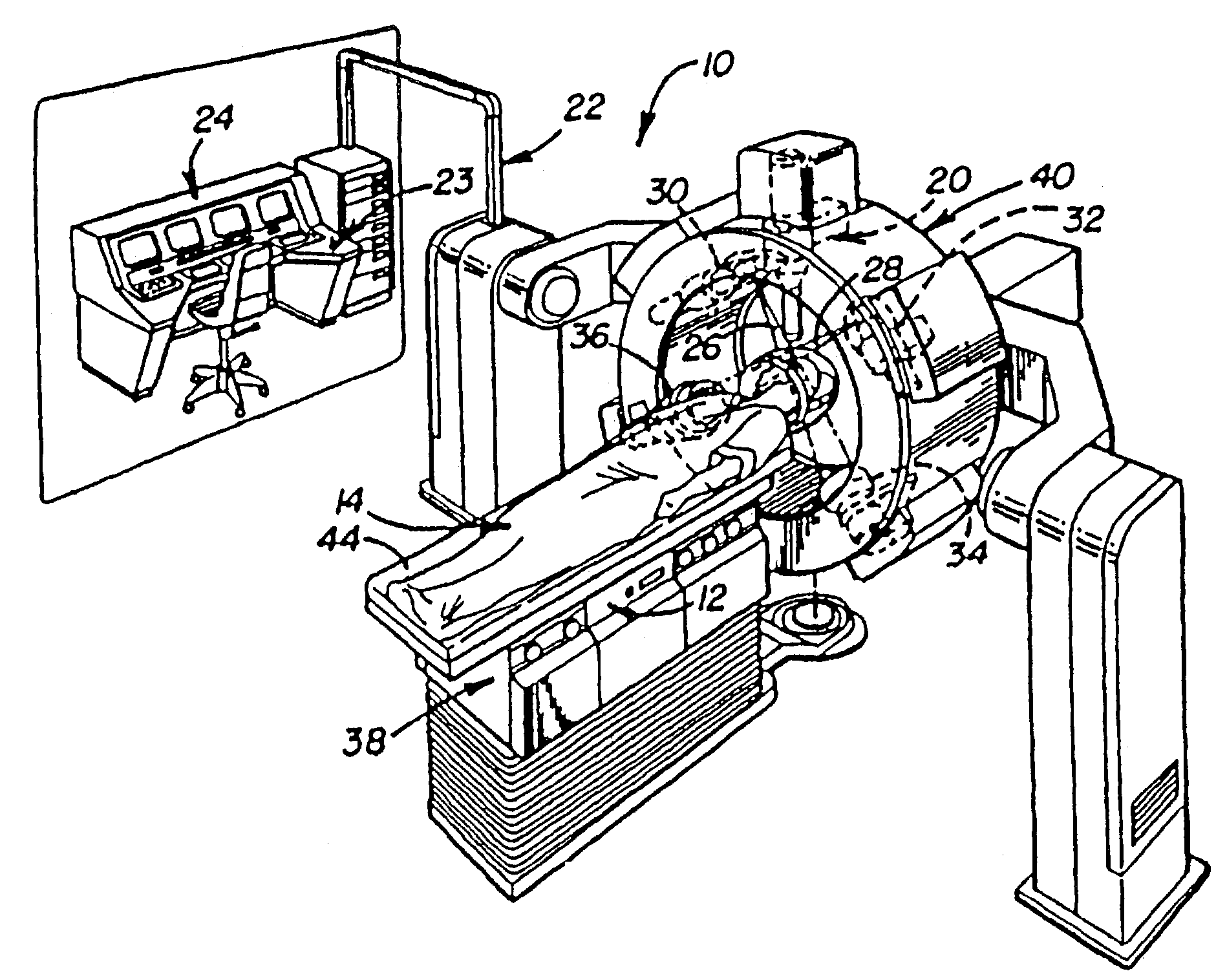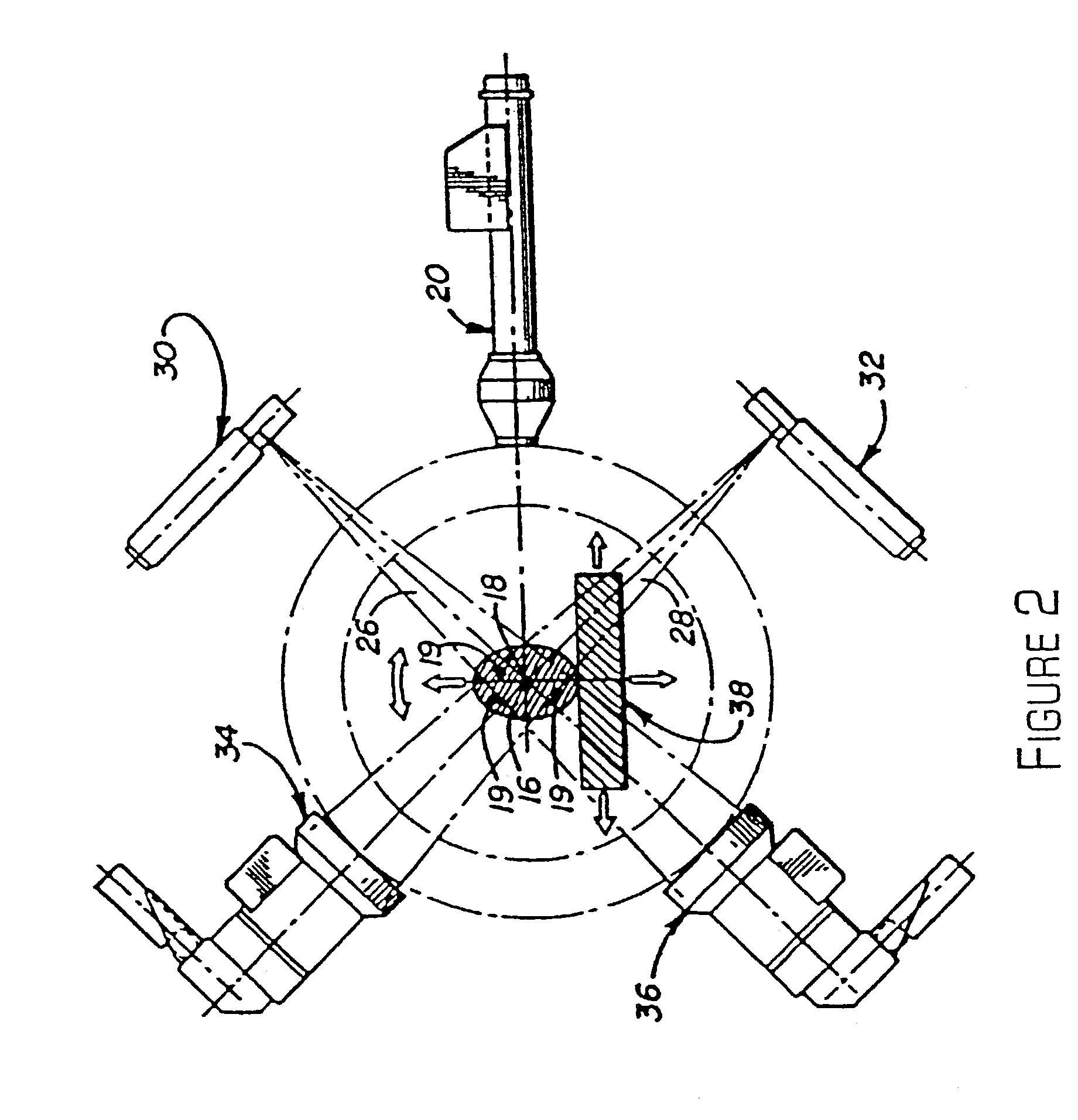Apparatus and method for compensating for respiratory and patient motion during treatment
a technology of respiratory and patient motion and apparatus, which is applied in the field of apparatus for improving the accuracy and efficacy of surgical treatments, can solve the problems of difficult tracking of respiratory motion using external sensors, focusing radiation, and tumor movement during treatmen
- Summary
- Abstract
- Description
- Claims
- Application Information
AI Technical Summary
Benefits of technology
Problems solved by technology
Method used
Image
Examples
first embodiment
[0048]Now, various other embodiments of the method for compensating for breathing and other patient motion in accordance with the invention will be described. In all of these embodiments, the respiratory and diaphragmatic excursion may be limited and minimized by binding the abdomen or compressing the abdomen. In a first embodiment, one or more small metal markers (also known as landmarks) are attached to the target organ before treatment. There may be three or four metal markers with possibly distinct shapes or sizes, which may be, for example, small gold beads. The exact position of these internal markers is determined by two x-ray cameras, which acquire a stereo image of the target site. There may also be one or more infra-red probes which are attached to the patient's skin surface. The infra-red probes give a very accurate and high speed position reading, but they only show the surface of the patient's body. In this embodiment, internal imaging of the internal markers and extern...
second embodiment
[0049]During the actual operation, it is difficult to obtain x-ray images more than once every predetermined number of seconds due to concerns about exposing the patient to too much radiation and due to the fact that the treatment beam cannot operate when x-ray imaging is being done. The x-ray imaging alone would therefore be too slow to follow breathing motion with high precision. Therefore, the external landmarks on the skin surface, as seen by the infrared system, are used for intra-operative localization, where we continuously reference the previously computed model of relative motions of the internal and external markers. This allows the exact placement of the internal landmarks (gold beads) to be predicted at time points where no x-ray images are available. Now, the method will be described.
[0050]In a second embodiment, there are situations in which it is desirable to compensate for respiratory motion as well as to compensate for pulsation effects. These pulsation effects may ...
third embodiment
[0051]In the method in accordance with the invention, no internal landmarks attached to the target organ are used. Instead, an ultra-sound camera is used to acquire the pre-operative image series, again in combination with an infra-red tracking system. The infra-red system in this embodiment establishes both the position of the external landmarks and the position of the (movable) ultra-sound camera, which must be moved by a human operator during this pre-operative phase. During the pre-operative phase, the ultra-sound images may be analyzed manually or semi-automatically in order to locate the target. During treatment, the external landmarks (infra-red probes) are used to compensate for the motion of the target organ since the motion model we have established allows the determination of the position of the internal target organ from the position of the external markers.
[0052]Furthermore, there are situations, where the attachment of markers to an anatomic target is difficult, undesi...
PUM
 Login to View More
Login to View More Abstract
Description
Claims
Application Information
 Login to View More
Login to View More - R&D
- Intellectual Property
- Life Sciences
- Materials
- Tech Scout
- Unparalleled Data Quality
- Higher Quality Content
- 60% Fewer Hallucinations
Browse by: Latest US Patents, China's latest patents, Technical Efficacy Thesaurus, Application Domain, Technology Topic, Popular Technical Reports.
© 2025 PatSnap. All rights reserved.Legal|Privacy policy|Modern Slavery Act Transparency Statement|Sitemap|About US| Contact US: help@patsnap.com



